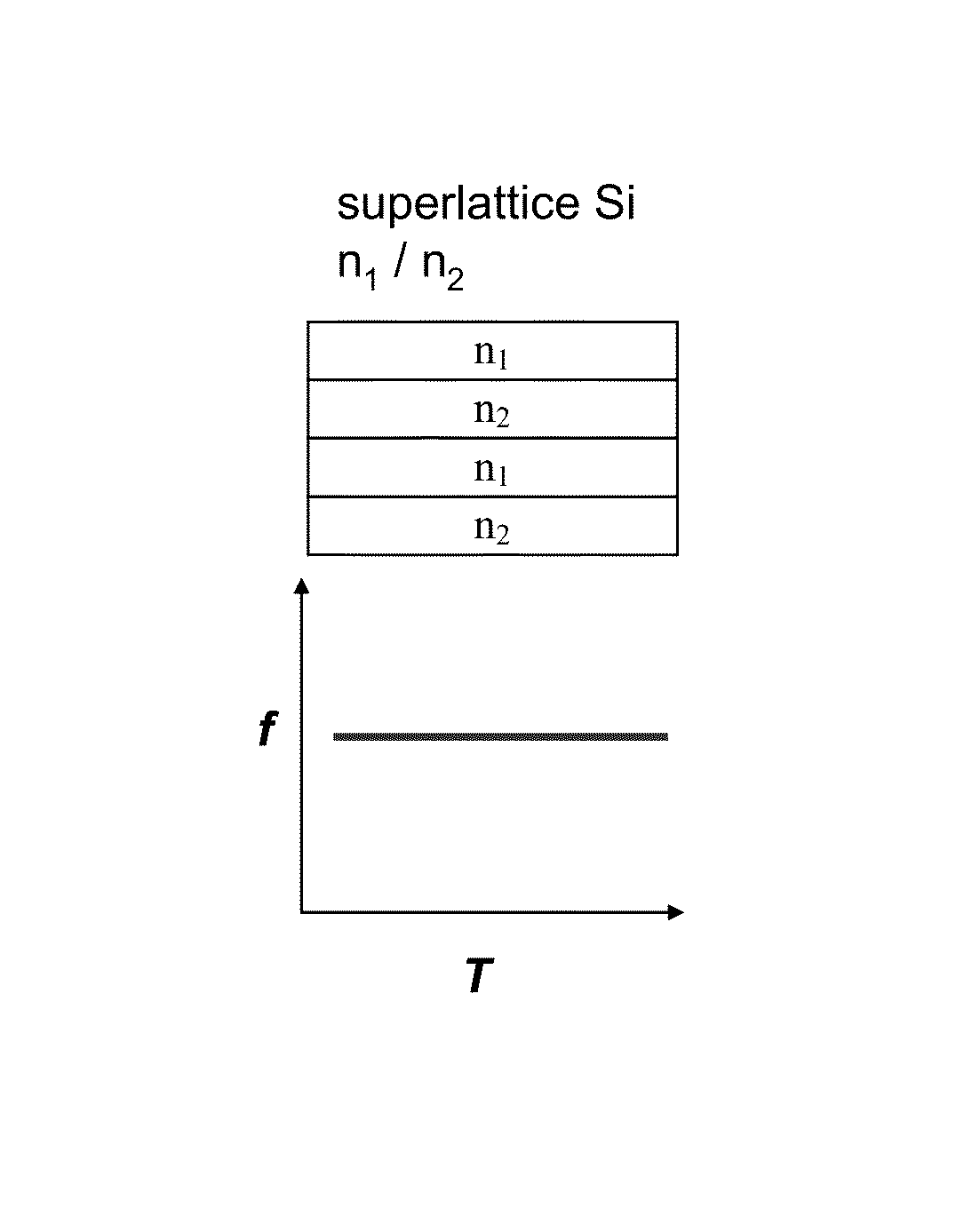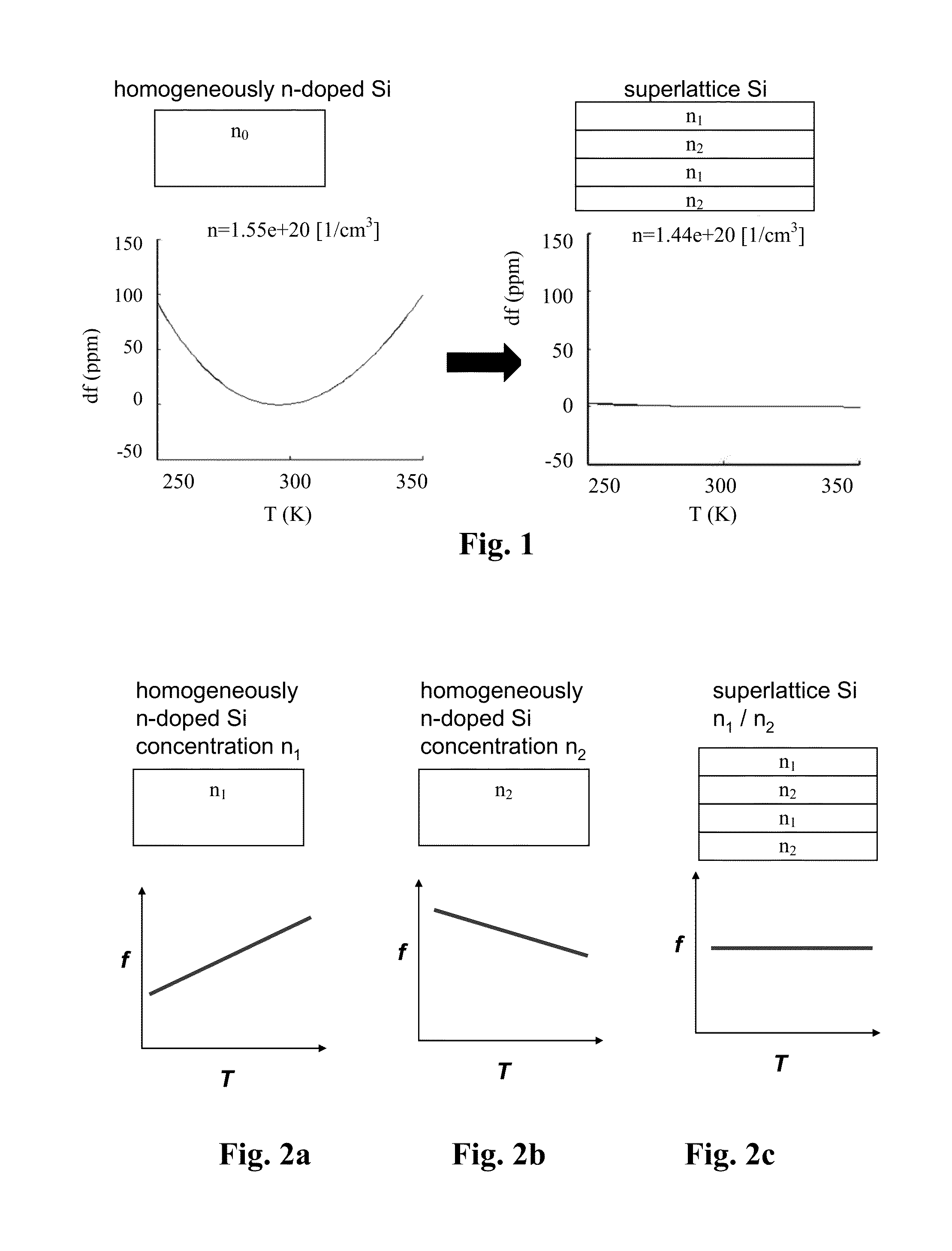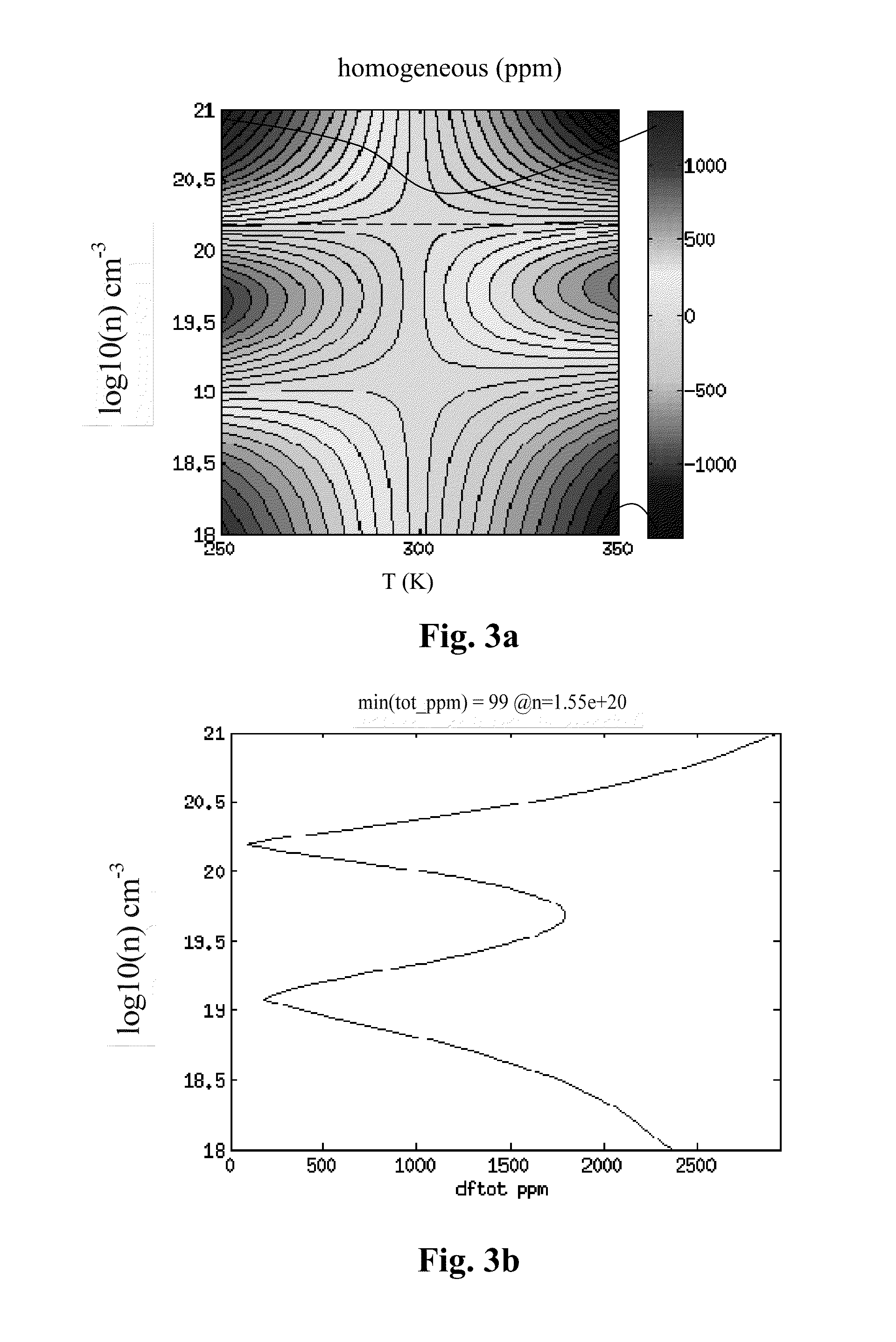Micromechanical device including N-type doping for providing temperature compensation and method of designing thereof
a micromechanical device and temperature compensation technology, applied in waveguide devices, generators/motors, instruments, etc., can solve the problems of increasing energy consumption, high temperature drift of resonance frequency, and inability to provide a resonator with sufficiently low temperature drift with low cost technology, etc., to achieve the effect of temperature sensitivity
- Summary
- Abstract
- Description
- Claims
- Application Information
AI Technical Summary
Benefits of technology
Problems solved by technology
Method used
Image
Examples
Embodiment Construction
[0059]In the following description, an embodiment where the distinct regions of a semiconductor resonator element comprise different n-dopant concentrations, including some variations, are described.
[0060]In a simplified picture, the slope of resonator frequency vs. temperature, is positive or negative slope at each temperature point, depending on the dopant concentration. These effects can be combined to cancel each other not only in some points but on a wide temperature region, if the resonator is formed of an optimized effective material which comprises arbitrary lateral and / or vertical regions with different doping levels.
[0061]These regions do not have to be discrete: concentrations within the resonator body can also vary continuously within the resonator volume, and the same cancelling effect can be obtained.
[0062]According to one embodiment, the semiconductor element is a beam. The term “beam” generally refers to elements whose in-plane aspect ratio (width vs. length) is at l...
PUM
 Login to View More
Login to View More Abstract
Description
Claims
Application Information
 Login to View More
Login to View More - R&D
- Intellectual Property
- Life Sciences
- Materials
- Tech Scout
- Unparalleled Data Quality
- Higher Quality Content
- 60% Fewer Hallucinations
Browse by: Latest US Patents, China's latest patents, Technical Efficacy Thesaurus, Application Domain, Technology Topic, Popular Technical Reports.
© 2025 PatSnap. All rights reserved.Legal|Privacy policy|Modern Slavery Act Transparency Statement|Sitemap|About US| Contact US: help@patsnap.com



